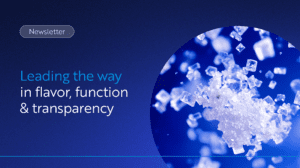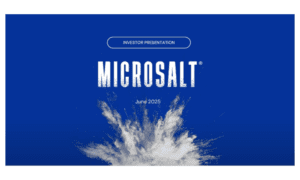The dangers of excess sodium and how it can affect our health are under increasing scrutiny, leading to healthier dietary initiatives.
Key Takeaways:
- Low sodium is a trend that’s becoming popular across all demographics
- New trends are emerging in the low sodium market
- There’s a move toward clean-label, simple ingredients
- Sodium nitrite is losing popularity because of its link with cancer
- WHO has issued new low-sodium benchmarks
- There’s a push for clear front-of-package labels for sodium content
- Consumers want low sodium products at competitive prices
Excess sodium contributes to some of the world’s deadliest health conditions, including hypertension, heart disease, and cancer. This means there are plenty of good reasons for businesses and consumers to keep a close eye on how sodium trends are impacting store shelves, international recommendations, and the health and habits of society as a whole.
The good news is that there is greater awareness of the impact of high-sodium products among health organizations, manufacturers, and consumers. Better, healthier decisions are being made to reduce the sodium content in food production and the sodium intake in our diets. Read on to learn how five of today’s biggest salt-centric trends are laying the foundations for a healthier future in foods.
1. Increased demand for clean labels
A clean label is simply one where a consumer can see not only everything that’s in the product, but also understand what every term means. Many current food labels include terminology that most people don’t know the meaning of. This lack of understanding fuels the “stealth sodium” problem that is sneaking 80% of our daily sodium intake into our diets under a variety of names via processed and prepackaged foods.
Consumers are increasingly demanding clearer nutritional labels on the front and the back of whatever they buy. This helps them avoid things like sodium nitrites and nitrates, which have been linked to production of nitrosamines in the body. This in turn can lead to gastric cancer and a long list of other conditions.
The clean label movement has been called the biggest trend of the decade for prepared and packaged foods by the Institute of Food Technologists (IFT). It is driven by consumers who know that a clean bill of health is dependent in large part on label transparency.
More and more often, people are looking for simple, socially responsible, natural ingredients over those artificial ingredients that do not consider the importance of consumer health. Food manufacturers looking to attract increasingly salt-smart shoppers must make clear labeling part of every product they provide.
2. Every demographic is now part of the low-sodium trend
Considering the health consequences of too much salt used to be primarily the concern of only the older demographic and/or those with chronic conditions. Increasing concern about how children are affected by excess sodium is a growing trend, as demonstrated by USDA initiatives focusing on less sodium in schools by 2024.
Careful monitoring of sodium among other demographics has been on the rise for years. A 2017 Health and Wellness report highlighted in Food Dive showed that 47% percent of Millennials (born between 1980 and 1994), 57% of Gen Xers (1965 to 1980), and 66% of Baby Boomers (1946 to 1964) were all avoiding excess sodium in their foods. Today, 75% of all Americans want less salt in their food, with 57% requiring more healthy options and more control over how much sodium goes into what they eat.
Government health figures for sodium highlight the recommended limits for adults and children of all ages. This helps make things easier for more health-conscious consumers, parents, and facilities like schools and workplaces. Following these recommendations is crucial when we consider that around 90% of U.S. children consume excessive sodium, with 1 in 6 of children aged 8–17 having elevated blood pressure.
3. Manufacturers will fall in line with global health authorities
The World Health Organization (WHO) issued new low-sodium benchmarks for food manufacturers to follow beginning in 2021. These limits will significantly reduce the acceptable amount of sodium in many snacks and other foods as part of a drive toward lowering global sodium intake by 30% by 2025. This will help consumers cap salt intake at 5 grams a day, which equates to less than 2 grams of sodium.
Food and snack manufacturers won’t be able to ignore the universal push against excess sodium in their products as regulatory expectations grow stricter for 2022 and beyond. Other agencies like the FDA have suggested new Guidelines for Industry, and the USDA is further expanding public health consciousness through its in-school dietary programs and publications, such as Dietary Guidelines for Americans, among other resources.
4. Lower sodium and lower prices will go hand in hand
Using less sodium in a product means it costs less for manufacturers to make. Smart manufacturers will pass these cost savings along to consumers, which simultaneously lowers public health risk and reduces spending on food purchases. Snack makers can expect competition for consumer dollars to heat up by degrees in the years ahead as the impact of the other reduced-sodium trends is gradually but inevitably felt at retail.
More people requiring lower sodium for themselves and their children will increase demand for less-salty products. Supply will need to keep pace to meet that demand from big name brands and in-store alternative versions. A greater number of low-sodium options on the shelves means food manufacturers will have to leverage every advantage they can to stand out, turn a profit, and play their part in a healthier world.
5. MicroSalt® helps set new health trends in 2022
MicroSalt® is a simple ingredient that allows food manufacturers to use 50% less sodium by weight while still supplying the salty sensation people want in their snacks. This means lower overheads, a healthier product at retail, and something you can proudly place on product labels. We’ve already introduced our SaltMe!® Chips, which are making news by helping people reduce their sodium intake and shake off the negative attitude toward low-sodium snacks.
Our all-natural, reduced-sodium solution and expert team made us the global winner of the P&G Alumni Network’s Star Entrepreneur Award in 2021. This year, we’re continuing our mission to make it easier for snack manufacturers to drive healthy sodium trends and for consumers to enjoy. Just contact us via our message page or call 1.877.825.0655 to learn more!




